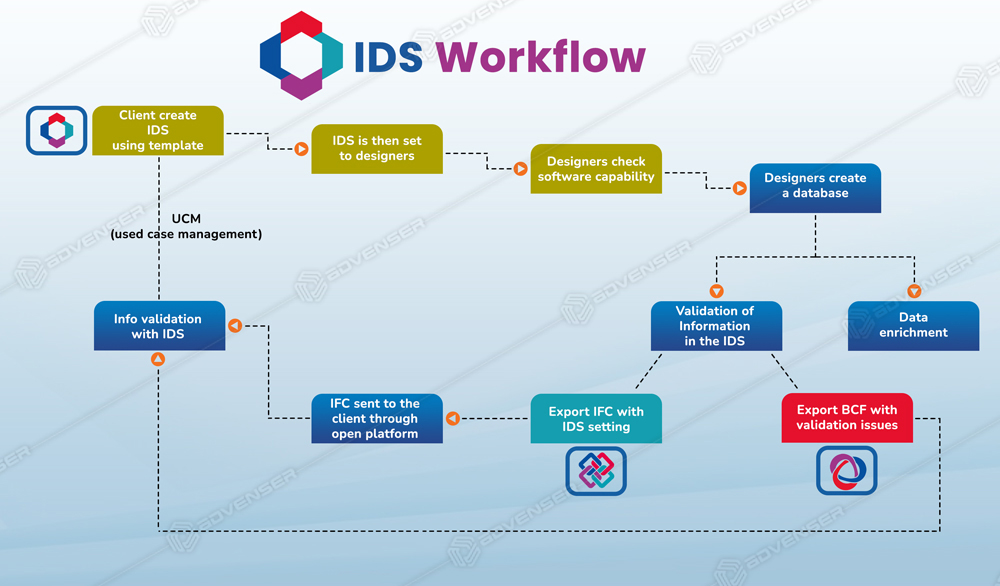In the digital age, where data reigns supreme, the Information Delivery Specification (IDS) plays a vital role in ensuring smooth and standardized communication. IDS facilitates efficient information exchange, fostering seamless collaboration among parties, especially in Building Information Modeling (BIM) projects. In this article, we’ll delve into the significance of IDS and its role in streamlining data delivery processes across various domains, highlighting the importance of innovation in supporting IDS implementation.

Understanding Information Delivery Specification (IDS) in BIM
IDS in BIM projects essentially serves as a set of standards that delineate how information should be structured and delivered throughout the project lifecycle. It defines critical aspects related to the communication of technical information required in BIM products and processes, including:
Requirements
IDS outlines the specific requirements for information delivery, ensuring that stakeholders understand what information needs to be provided at each stage of the project.
Formatting
IDS establishes standardized formats for data presentation, ensuring consistency and clarity in information exchange.
Nomenclature
Clear and consistent naming conventions are essential for effective communication. IDS defines nomenclature standards to avoid confusion and ambiguity.
Coding
Coding standards specified in IDS facilitate data organization and retrieval, enhancing efficiency in data management processes.
The Role of Innovation in Supporting IDS Implementation
Embracing innovation is crucial to supporting the successful implementation of IDS in BIM projects. Here’s how innovation plays a pivotal role:
Technology Integration
Technology plays a vital role in integrating IDS into existing systems and workflows. Innovative solutions and tools are essential for seamlessly implementing IDS standards and ensuring compatibility with diverse software platforms.
Leadership Vision and Communication
Leaders must possess an innovative mindset and effectively communicate a clear vision of the future of technology and work practices. By articulating how IDS aligns with company objectives and the benefits it brings to employees and customers, leaders can foster buy-in and enthusiasm for change.
Motivation and Engagement
Leaders should motivate and engage teams to embrace IDS and make data-driven decisions. By empowering teams to adapt quickly to change and leverage IDS to its full potential, organizations can drive innovation and achieve greater efficiency in BIM projects.
Leveraging IDS for Enhanced Collaboration and Standardization
IDS helps establish a clear and structured process for information exchange, classification of project demands, and automation of delivery requirements verification. By promoting collaboration and standardization in information delivery, IDS serves as a valuable resource for project leaders, enabling them to streamline workflows and optimize resource allocation
Conclusion: Driving Innovation and Efficiency with IDS in BIM Projects
In conclusion, Information Delivery Specification (IDS) is instrumental in fostering innovation and efficiency in BIM projects. By embracing technological advancements, fostering a culture of innovation, and leveraging IDS to streamline information exchange processes, organizations can drive collaboration, standardization, and ultimately, success in their BIM initiatives.

Shijo Jose is a dynamic BIM Implementation Specialist at Advenser Engineering Services, boasting over three years of industry experience. A graduate of the prestigious Global BIM Management program at the University of Barcelona (UB), Shijo combines academic excellence with practical expertise to drive innovation in Building Information Modeling (BIM). Beyond his professional pursuits, Shijo is an avid writer with a passion for literature, channeling his creativity into diverse artistic endeavors.






